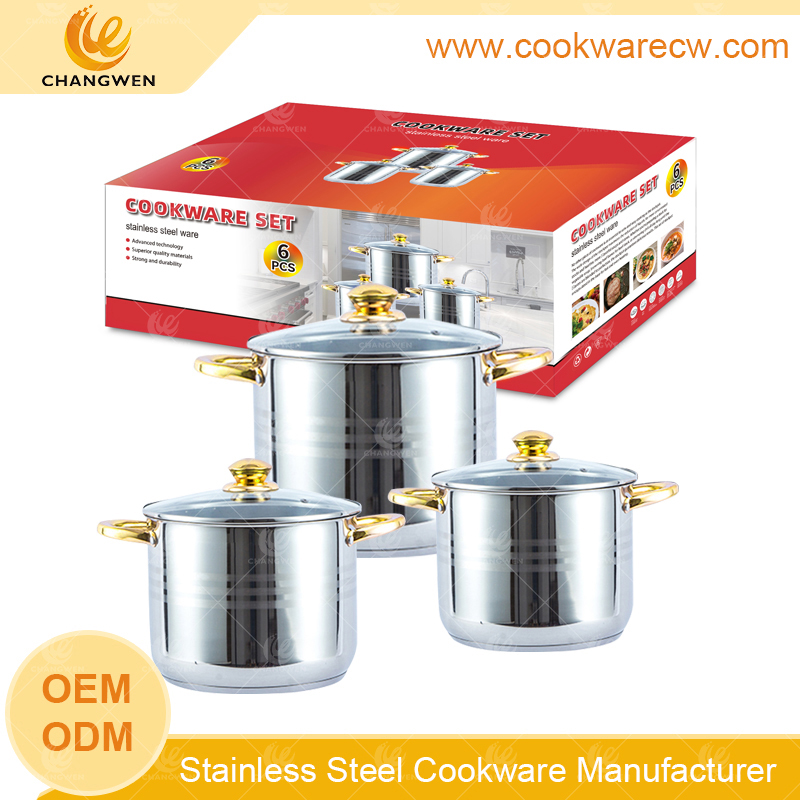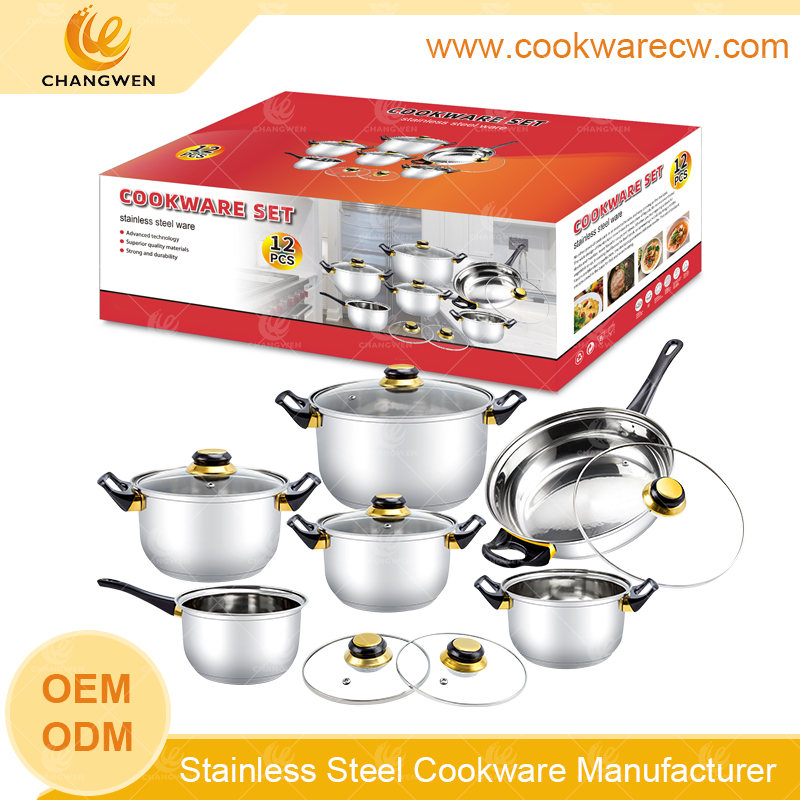Blog & News
We pay attention to the latest news on the product trend of kitchen utensils and continue to develop new products suitable for the market
What Materials are Used in Frying Pans, and Which are Good?
Views: 231 Author: China CHANGWEN Cookware Publish Time: 12/19/2023 Origin: https://www.cookwarecw.com

Every kitchen shares several common elements, one being the indispensable frying pan. Though a necessity in all cuisines, not all frying pans are created equal. In fact, they come in various types, primarily distinguished by the materials used. This article aims to provide an understanding of the different materials used in frying pans and their respective advantages.
Common Materials Used
1. Stainless Steel
Stainless steel is a popular choice for many high-quality frying pans. It is known for its excellent durability and consistency in heat distribution. Moreover, stainless steel does not react with foods, ensuring there are no unwanted metallic flavors in your cooking.
2. Carbon Steel
Similar to cast iron, carbon steel pans are highly prized by professional chefs due to their impressive heat retention and even distribution. They are lighter than cast iron, making them easier to maneuver but will need a bit more maintenance to prevent rusting.
3. Copper
Copper pans are regarded as the gold-standard in gourmet kitchens due to their exceptional thermal conductivity. They heat up and cool down very quickly which gives the chef precise control over the cooking temperature. However, they require regular polishing to maintain their lustrous appearance.
4. Non-Stick
Arguably the most user-friendly type of frying pans, non-stick pans are perfect for low-fat cooking and easy cleaning. Typically made of aluminum or stainless steel coated with a layer of PTFE or ceramic, non-stick pans are ideal for cooking delicate foods like eggs or fish.
5. Aluminum & Hard-Anodized Aluminum
Aluminum pans are lightweight and known for their excellent heat-conducting properties. They are affordable and can stand up to high cooking heat. Hard-anodized aluminum pans are even more robust, non-reactive, and offer a largely non-stick surface.
6. Cast Iron
Cast iron is a common material for pots and pans. It is made of gray iron that is melted and cast in a mold. The cast iron grill pan has a good heating function. When the temperature exceeds 200 degrees, it will emit a certain temperature and control the food in the pan to about 230 degrees, so that the food can be cooked quickly. However, cast iron grill pans are heavy, prone to rust, and difficult to clean.
7. Medical stone
Medical stone is not a natural material. It is an aluminum alloy plate with a special coating. It can be used directly on an open flame and conducts heat very quickly. If it is to be used on an induction cooker, an electromagnetic induction stainless steel plate needs to be added to the bottom.
Best Frying Pan Materials
Choosing the “best” material greatly depends on your specific cooking needs, budget, and maintenance preferences. However, there are a few materials that consistently score high for their overall performance and value.
Stainless Steel: For everyday cooking, stainless steel pans are hard to beat. They are durable, affordable, and hygienic due to their non-reactive quality.
Non-Stick: For convenience and ease of use, non-stick pans are great for beginner cooks or those who prefer easy cleanup. However, care should be taken to avoid overheating them as it could damage the coating.
Cast Iron: If cared for properly, a cast iron pan can be a lifelong kitchen associate. Its exceptional heat retention makes it ideal for searing, baking, and slow-cooking.
In conclusion, there’s no single material that is the absolute best for all cooking needs. It’s essential to understand the properties and suitability of each material to make an informed choice that fits your cooking style and needs.
Latest News
- What is Surgical Stainless Steel Cookware?
- What is 18/10 Stainless Steel Cookware?
- The Ultimate Guide: Where to Buy Large Stainless Steel Steamers
- Stainless Steel Cookware Manufacturers
- Cast Iron Cookware Manufacturers
- How much does a three-layer steamer cost and how to choose one?
- What Materials are Used in Frying Pans, and Which are Good?
- What material is good for stainless steel frying pan?
- Features of Capsule Bottom Stainless Steel Cookware
- What is the difference between stainless steel 18/8, 18/10, 304, and 306
- The Most Important Step in the Nonstick Frying Pan Manufacturing Process
- where is stainless steel frying pan manufactured
- Explore the Differences Between Cheap and Expensive Stainless Steel Cookware
- Advantages and Disadvantages of Chinese Cookware
- Why choose 180/8 material for stainless steel cookware?
- What are the purchasing channels for cookware in Mexico?
- Opening a cookware store in Mexico, how to purchase goods
- Why choose stainless steel cookware when exporting to Mexico?
- A Deep Dive into Stainless Steel Cookware: Comparing 304, 316, 430 and Three-layer Stainless Steel Pots
- A Comprehensive Guide to Cookware Materials and Their Pros and Cons
 English
English Español
Español Português
Português







